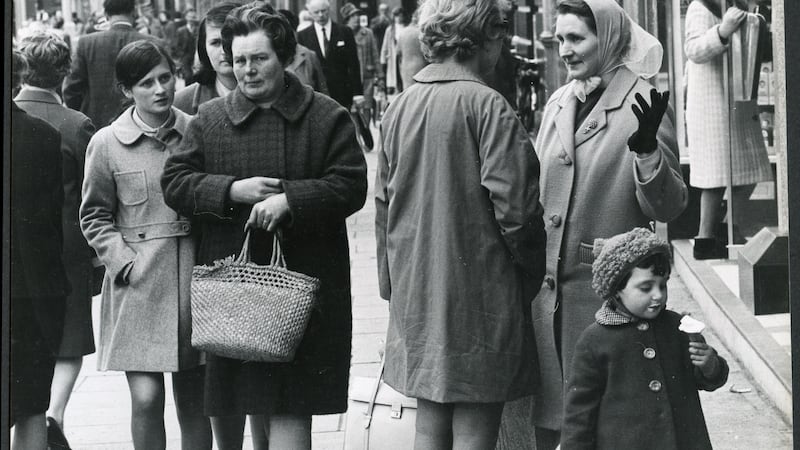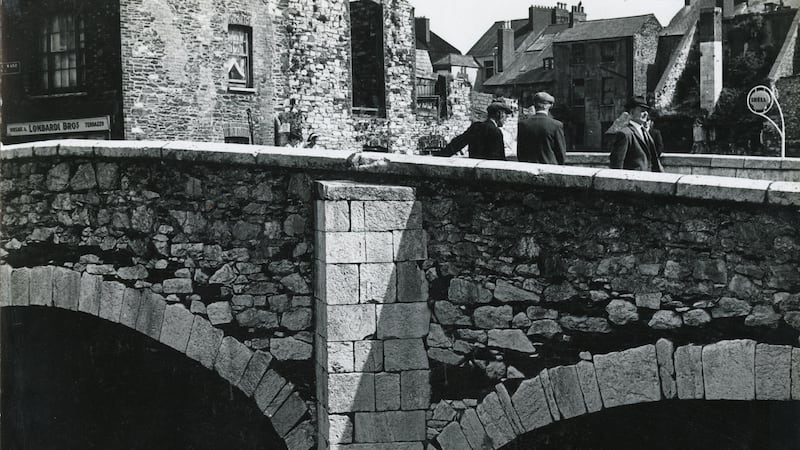To give the late Anthony Barry his due, he always warned the family when he wanted to use the bathroom. "There were red lights everywhere, and then the bathroom would be out of bounds for hours at a time," recalls his granddaughter Orla Kelly.
Known to his grandchildren as “Big Tony”, Barry was an amateur photographer and the bathroom, although the only one in the house, was his darkroom.
Anthony Barry, as TD and senator until 1965 and lord mayor of Cork from 1961 to 62, established with his wife Rita an unflinching Fine Gael dynasty in the persons of Terry, Peter and Peter's daughter MEP Deirdre Clune (it almost goes without saying that Clune like her father is also a former lord mayor of Cork).
His other children include Tony Barry, a former chair of CRH; architect Jim Barry; John Barry, a teacher in the Christian Brothers order in Rome; and Paddy Barry, of the much-lamented Mainly Murder bookshop in Cork.
It was after the death of her mother Terry two years ago that Orla Kelly took over as keeper of the 200 green leather albums of Anthony Barry’s prints.
“There are no negatives,” she says, “he only kept the prints, and not all of them at that. And even though the collection now is so extensive, amounting to something like 5,000 images, he never described them as an archive and he never exhibited them during his lifetime.”
That reticence may have been due to his political career or to the fact that he didn’t need an exhibition to announce himself. Anthony Barry took over the tea business begun by his father James in North Main Street, expanded it into Princes Street and turned it into the importing, blending and distribution force it is today.
Historic record
But the photographs were there, and so were his grandchildren, two of whom run Jacques, a restaurant near Cork's South Mall. Here Eithne and Jacque Barry mounted a few of the black and white images on the walls, where they were seen by photographer Eoin Murphy.
He was so taken with these enlarged photographs and their potential as a historic record of a relatively recent, more crowded and yet more leisurely Cork that he brought the collection to the attention of Paul McGuirk at Cork City Council and Brian McGee, director of the Cork City and County Archive Centre.
“Eoin was the catalyst for all this,” says Orla Kelly, “all this” being the launch last month of a digitalised collection at the archive centre.

The gods, as Patrick Kavanagh insisted, make their own importance, and in his daily stroll from his home in York Terrace to his shop over 10 to 20 years Anthony Barry composed a visual narrative of a city's active existence. The collection has already been introduced in smaller groups by two family publications: No Lovelier City by TK Publications Kilkenny appeared in 1995, while Cork in the 1960s came out in 2015.
Polished shoes
In his foreword to the 1995 book, Peter Somerville-Large points to one of the defining details and qualities of Anthony Barry's pictures: the polished shoes of the blind violinist Christy Dunne, who, with his brother Mick, played alternately and seasonally on the streets of Cork and in continental cities. Now we would call them buskers but despite their dilapidated clothes, these two men had a dignity that made them not so much characters as citizens.

While occasional visitors such as foreign sailors and their submarines might be admitted to the camera, Barry’s eye is always on the people and their physical and elemental geography: the shops, the warehouses, the talkative women hatted or shawled, the bored and waiting children, the quays whose walls reflect the river in a vista reminiscent of Venice, the dray-horses hauling the casks of Beamish or Murphy’s to the railway station or the quays, the gulls whirling above a bridge or the cloud-dulled channel where a swaying painter refreshes the prow of a ship.
Streetscape
Much of the remembered streetscape remains but the names, like the swans, have gone: British Rail, Munster and Leinster Bank, RTV Rentals, Burtons, the Munster Arcade, May Atkins, Guys, Barry and Co.
As Eoin Murphy noticed, what produces such a compelling aesthetic quality is not alone the detail but the unaffectedness, the lack of conscious composition or pose. The children playing between the sculpted limbs of statues in FitzGerald’s Park do not see the camera, nor do their mothers.
Sometimes a long view has a balanced alignment but this seems accidental or providential. Either way, the Rolleiflex camera was there to catch the opportunity: the fall of a shadow, a glimpsed reflection on a wet day, a man absorbed in his newspaper, the paired springer spaniels let lie in a corner, the ubiquity of bicycles, the phantoms of ships and cranes dimmed by a river mist.










